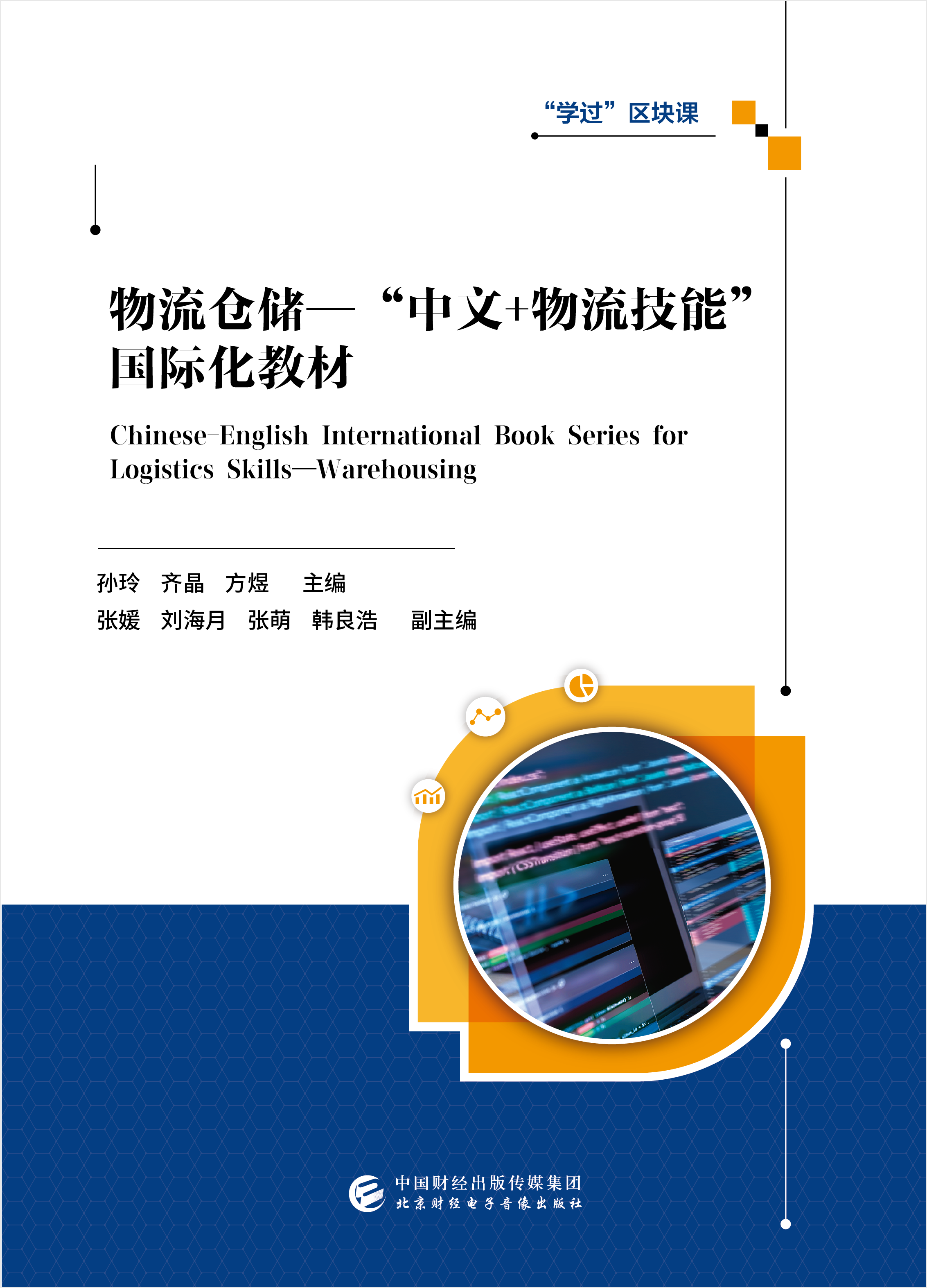前言
Preface


近年来,随着全球经济一体化的发展,“一带一路”建设的深入推进,物流行业已成为全球经贸合作的重要基础和必要条件,是推动国家经济发展的重要支撑性力量。数字贸易、跨境电商、自贸区等新型贸易模式涌现,中欧班列、云仓、海外仓等新型物流渠道发展,急需培养一大批具备国际视野、综合素质好、跨文化沟通能力强的国际物流与供应链人才。
In recent years, with the development of global economic integration and the in-depth promotion of the "Belt and Road", the logistics industry has become an important foundation and necessary condition for global economic and trade cooperation, and an essential supporting force to promote national economic development. Given the emergence of new trade models such as digital trade, cross-border e-commerce, and free trade zones, and the development of new logistics channels such as China-Europe trains, cloud warehouses, and overseas warehouses, the cultivation of a large number of international logistics and supply chain talents with international vision, good comprehensive quality, and strong cross-cultural communication skills is in urgent need.
本教材定位为职场技能中文教材、立体式技能型语言教材。教材研发的目标是既要满足学习者一般中文环境下的基本交际需求,又要满足学习者职业学习需求和职场工作需求。
This textbook is positioned as a workplace skills Chinese textbook and a three-dimensional skill-based language textbook. The goal of research and development is not only to meet the basic communication needs of learners in the general Chinese environment, but also to meet the needs of learners' vocational learning and their positions.
本教材由中国物流与采购联合会、全国物流职业教育教学指导委员会指导,“双高”校烟台职业学院百世(泰国)海外培训中心和“班·墨学院”团队和天津海运职业学院“鲁班工坊”负责人以及国内领先物流科技企业百世集团技术专家组成。编写团队共同学习并联合行业协会,抽取部分具有代表性的仓储企业开展调研,在充分了解与仓储岗位设置、岗位工作任务、标准作业流程、操作规范、常见异常问题及作业技术等基础上,经过前期深入调研与反复论证,分析、确定仓储岗位工作所需的能力,并提炼出典型的工作任务和工作流程,使教材内容高度贴近企业真实仓储业务,符合岗位实际,从而确保理论联系实际能够在教材中得到充分体现。
This textbook is guided by the China Federation of Logistics and Purchasing and the National Vocational Education Teaching Steering Committee for Logistics and it is the collaborative effort of the "Double High-Level Plan for Vocational College" Yantai Vocational College's Best (Thailand) Overseas Training Center, the "Ban Mo Academy" team, the "Luban Workshop" leaders from Tianjin Maritime College, and technical experts from Best Logistics Group, a leading domestic logistics technology enterprise. The writing team engaged in joint learning and collaborated with industry associations to conduct research on a selection of representative warehousing enterprises. Based on a thorough understanding of warehouse position setups, job tasks, standard operating procedures, operational norms, common exceptions, and operational techniques, the team conducted in-depth preliminary research and repeated deliberations. They analyzed and identified the competencies required for warehouse positions, extracting typical job tasks and workflows. This ensures that the textbook content closely aligns with real-world warehousing operations and meets the practical demands of the positions, thereby fully embodying the integration of theory and practice in the material.
本教材以真实仓储业务为主线,教材内容聚焦物流仓储管理中实施入库作业、实施库内作业、实施出库作业以及仓储安全管理4个项目的核心工作,具体分解为16个学习任务。各项目的学习按照“项目概述”“知识导图”“学习任务”展开,其中,每个学习任务围绕“任务导入”“学习内容”“专业核心词汇”“学习拓展”“知识巩固”“技能训练”“任务小结”7个环节展开,体现了教、学、做一体化,力求做到任务安排循序渐进,工作内容描述详尽,步骤展示连续清晰,使学生能够掌握各岗位的作业流程、操作规范、系统应用、数据分析等工作技能,具备真实的工作能力。
This textbook focuses on the four core operations: inbound operation, warehouse operation, outbound operation, and warehousing safety management. It is specifically decomposed into 16 learning tasks. The learning of each project is carried out in accordance with the "Project Overview", "Knowledge Map" and "Learning Task", among which, each learning task revolves around 7 links: "Task Introduction", "Learning Content", "Vocabulary", "Learning Expansion", "Knowledge Consolidation", "Skill Training" and "Task Summary", which reflects the integration of teaching, learning and doing. The textbook strives to achieve gradual task arrangement, detailed description of work content, and continuous and clear step display, so that students can master the work process, operation specifications, system application, data analysis and other operation skills of each position, and be qualified for their future positions.
本系列教材将适用对象定位为双零基础(零语言基础、零技能基础)的来华学习中文和先进技能的长期或者短期进修生,教材也可供海内外相关的培训课程及“走出去”的中资企业培训本土化员工使用。
This series of textbooks are suitable for long-term or short-term students who come to China to learn Chinese and advanced skills with zero foundation (zero language foundation and zero skill foundation), and the textbooks is also fit for relevant training courses at home and abroad as well as training for staff localization in "going global" Chinese-funded enterprises.
本教材的编写分工如下:孙玲编写项目1,并负责教材大纲编写、总体架构、体例设计以及全书统稿。齐晶编写项目3,方煜编写项目2(部分),张媛和刘海月编写项目4,韩良浩编写项目2(部分),张萌和郑皓月负责全书英文翻译。感谢临沂大学外国语学院院长张迪,副院长周银凤对本书翻译工作的指导。
The division of tasks for the compilation of this textbook is as follows: Sun Ling wrote Project 1 and was responsible for the outline of the textbook, the overall structure, the design of the format, and the final editing of the entire book. Qi Jing wrote Project 3, Fang Yu wrote part of Project 2, Zhang Yuan and Liu Haiyue wrote Project 4, Han Lianghao wrote part of Project 2, and Zhang Meng and Zheng Haoyue were responsible for the English translation of the entire book. We sincerely thank Dean Zhang Di and Vice Dean Zhou Yinfeng of Linyi University's School of Foreign Languages for their expert guidance in the translation of this book.
限于编者水平和时间,本教材仍可能存在不足或欠妥之处,敬请各位专家、同仁和广大读者批评指正,以使本书日臻完善。
Any advice and criticism is warmly welcome about this textbook.
编者
2024年5月
Members of the Compilation Team
May, 2024